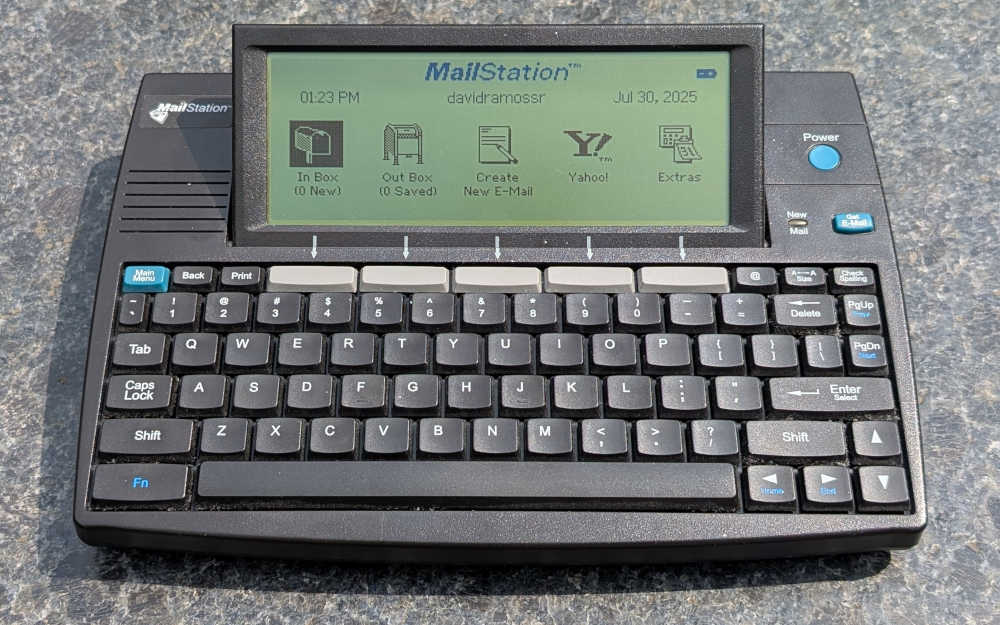What is the Mailstation?
The Cidco Mailstation could be considered the last commercial Z80 computer ever made... at least for certain definitions of "computer" and "made". Introduced in 1999, it featured a Z80 processor running at 12 MHz and 128 kB of RAM, as well as a monochrome LCD screen with 320x128 resolution:

The Z80 8-bit processor was a dominant force in early 1980s home computing. Classic machines such as the ZX Spectrum, Amstrad CPC, and the entire MSX line were all built around it. However, the market shifted quickly to 16-bit and 32-bit CPUs, like the Intel 8086 and Motorola 68000, as computing needs outgrew what these 8-bit processors could provide, both in computing power and address space.
Sure, some companies continued to use the Z80 in new designs to maintain compatibility with older systems. Amstrad, for example, included it in their PCW line of word processors until 1995 (when the PCW16 was introduced), while Sharp, Casio, and Texas Instruments continued using Z80-based CPUs in their pocket computers and programmable calculators. Some more powerful machines used the Z80 as a co-processor for certain tasks (like the Sega Genesis). So yes, Z80-based computers were still being made in the 1990s, and, in fact, still are today; you can buy a brand new TI-84 Plus CE if you want!
But to use the Z80 as a main CPU in a completely new computer design as late as 1999? That's... brave, for lack of a better word. Just for perspective: at that time, PCs ran on Pentium II CPUs, ARM was entering the scene, and even cheap PDAs like the Palm Pilot used 32-bit Motorola 68k processors.
In the Mailstation's defense, it's a specialized device, dedicated to one task and one task only: email. You can connect to the Internet via dial-up, send and receive email using SMTP and POP3, manage contacts and calendar events, view content delivered to you via the modem, and that's about it. Still, it's a computer in my book, just like the Amstrad PCW16 is a computer:
- It has a keyboard, display, mass storage, and means of communicating with the outside world.
- It is possible to install and run additional apps (though the available selection was limited both in scope and functionality, and the app installation method is somewhat convoluted).
- Most importantly, it's hackable and reprogrammable - which, of course, is what computers are for!
What makes it especially interesting for me personally, is the potential ability to "jailbreak" the machine - hack around the software limitations and install completely new software, or even your own operating system.
If you’re interested in learning more about this machine, check out the following topics:
- Hardware – The capabilities of the machine, input/output, connectors, and expansion.
- Software – What’s included in the ROM, and what you can do with it.
- Emulation – Emulating the Mailstation on modern PCs (or even in your browser).
- Documentation – Various resources and manuals gathered by the Mailstation hacker community.
- Hacking – Writing your own software, installing it on the device, and exploring existing homebrew projects.
- Modding – Hardware modifications, such as adding WiFi connectivity.
- Projects – Existing homebrew projects using the Mailstation.
- Downloads – Various downloadable files which I gathered for convenience.
Have fun!
